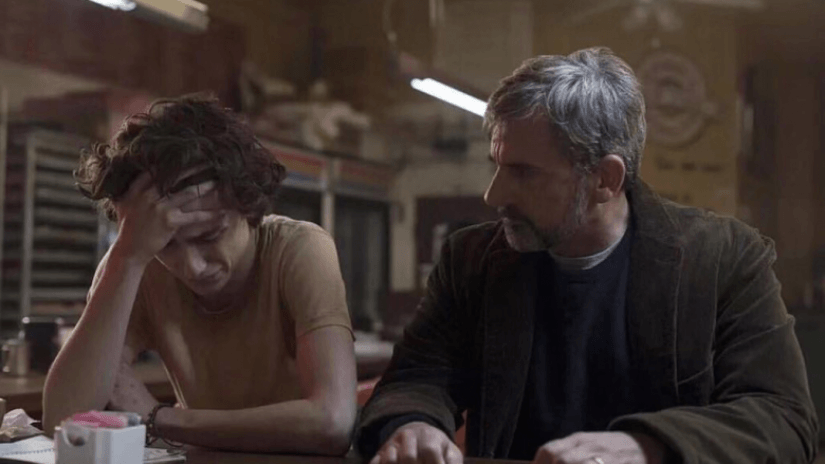Queen. A name which immediately elicits thoughts of Freddy Mercury, internal hums of their greatest hits, and rightful praise of one of the greatest bands of all time. For a band so well known, it is also a band which has yet to receive the cinematic treatment beyond a few docs and a handful of concert films. But now in 2018, with the seal of approval from Queen, Fox managed to finesse a biopic that aims to tell the story of Freddy Mercury and the band itself. The film, titled Bohemian Rhapsody, has the tall order of being a great biopic that matches the greatness of its subject matter, but unfortunately, such lofty goals are not attained. In fact, it falls considerably short of that ambition. Instead, we receive a very safe tale of Freddy Mercury’s life that fails to tell us anything profound about his character and instead opts for a sugar-coated rendition that avoids being critical or daring in any sense.
Bohemian Rhapsody follows the life of Freddy Mercury starting with his humble beginnings as Farrokh Bulsara to his ascent as the monolithic super persona that took the world by storm. Mostly concerned with Mercury himself, the film tells a tale of his personal struggles as he handles stardom, band members, and his own personal and sexual identity. From his rise to his death, Bohemian Rhapsody hopes to provide an introspective look at the man who had the world at his fingertips, but trouble defining himself.

In comparison to other biopics, this is firmly planted as the Jobs of Queen biopics when it really needed to be Steve Jobs. If you’re going to make a biopic about one of, if not thee, greatest bands of all time featuring one of, if not thee, greatest singers ever, then you really need to make a biopic that matches the legendary status of the subject matter. It needs extreme, conscious care, and the fact that Bryan Singer was removed from the project indicates that Fox knew that too. Unfortunately, the damage has already been done, and not even a replacement director could fix the systematic problem of the film: banking on Queen itself.
Pardon the crudeness, but there’s something pornographic about the film. Further, the story is not all that great, but to some extent, the film is saved by another aspect of the film, and in this case, it’s the music. It is so easy for the audience to let go and submit themselves to the music. I mean for crying out loud, it’s QUEEN. How can you not like “Bohemian Rhapsody” or “We Will Rock You” or “We Are the Champions” or “Another One Bites the Dust” or any of the other dozens of hits they produced? Hearing Freddy Mercury’s angelic voice paired with iconic beats on a high-quality sound stage found in a movie theater is great. It’s pretty much two hours of Queen’s greatest hits and it’s the best part of the film. But that’s a problem when you’re there for a movie.
Being reminded how great Queen is and how many bangers they made really helps gloss over the fact that the emotional throughline can be described as nothing more than baseline. The main theme is the need for identity: Freddy Mercury’s exploration of his own sexuality and the interaction with the band is how the film tries to develop him as a character. It starts with Mercury running from his heavily traditional family to joining a band who finds great success to leaving it for a solo career to ending up with him rejoining the band after he realizes how wrong he was to leave. It’s a narrative that’s as old as time, and one you would expect out of a Disney channel movie. It’s a sugar-coated narrative that skirts around anything substantial to avoid stepping on anyone’s toes, and it is evidently clear that Queen’s veto power over the film influenced what could and couldn’t be done. The narrative is oddly split between Mercury and the band itself; it’s two-thirds Mercury and one-third band when it should have really been all Mercury. At times the film has difficulty aligning itself with Mercury, which is the biggest problem here. The result is something completely impersonal, totally safe, and holistically uncompelling.

As many have probably already heard from word of mouth, Rami Malek is as good as everyone says he is. Most commonly known for his lead role on Mr. Robot, Malek has been relegated to smaller film roles leading up to this film, but here he is finally given the chance here to be a leading man, and his passion shows. Malek has no easy task of portraying Mercury, but to his credit, he puts his best foot forward. Malek’s swagger on and off stage as the eccentric personality is handled effectively in the performance. He seems to comprehend how much of a character Mercury was and plays into this extraordinary persona. It is where Malek displays the delicacy and fragility in Mercury’s need for an identity where the range comes through, but unfortunately, the aforementioned narrative renders much of that performance null.
For a band that is as prolific as Queen, it is a shame that we got a biopic that is completely mediocre. When we think about great biopics and what those films had to say about their subjects, one can only think about the profound, nuanced, and striking statements they made. Films like The Social Network were not afraid of making a negative claim (and in that case, one that was inherently true) that was bold and against the preferences of their subjects. They were daring. This isn’t to say I want a film that drags Freddy Mercury’s or Queen’s name through the mud but to give us a film that is afraid of getting its hands dirty with meaningful conflict or depiction is completely disinteresting.
Score: 2.5/5 Stars

























